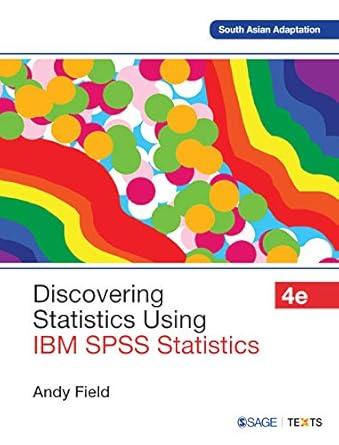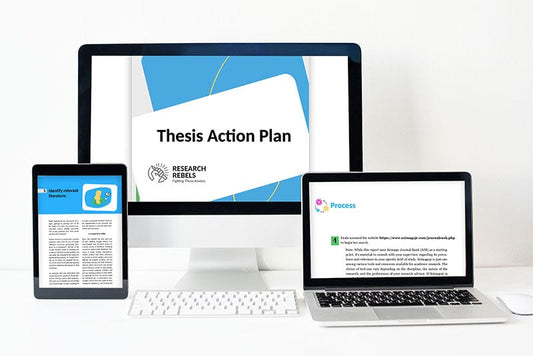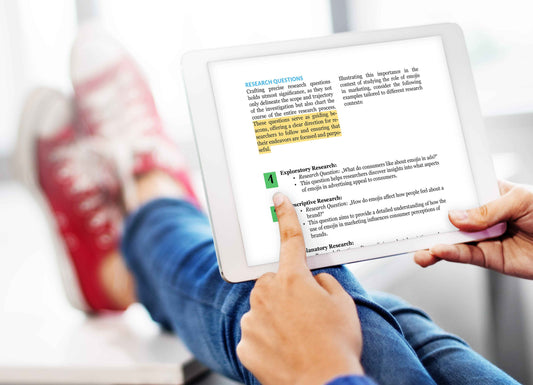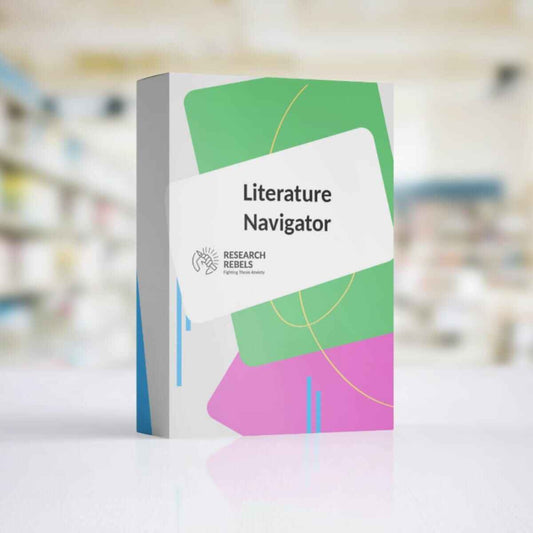Mastering Research: A Review of 'How to Design and Report Experiments'

Navigating the world of experimental design and statistics can be daunting, but 'How to Design and Report Experiments' by Andy Field and Graham J. Hole makes it approachable and even enjoyable. This book is a comprehensive guide that takes you through the entire process, from generating research ideas to writing up your results, with a touch of humor and clarity that sets it apart from other textbooks.
Key Takeaways
- Comprehensive Coverage: The book covers everything from the initial stages of research design to the final reporting of results, making it a one-stop resource for students and researchers alike.
- User-Friendly: Written in an engaging and humorous style, the book makes complex topics accessible and enjoyable to read.
- Practical Examples: Real-world examples and tips help to illustrate key points and common pitfalls, making it easier to apply the concepts in practice.
Comprehensive Coverage
One of the standout features of 'How to Design and Report Experiments' is its thorough coverage of the entire research process. The book starts with how to come up with research ideas and refine your research question. It then moves on to the actual design of the experiment, including statistical procedures and the final write-up of results. This chronological approach ensures that you understand each step in the context of the overall process, making it easier to follow and apply.
User-Friendly and Engaging
What sets this book apart from other textbooks on the subject is its engaging and humorous writing style. Andy Field and Graham J. Hole manage to make a typically dry subject not only accessible but also enjoyable. The authors use humor and empathy to connect with the reader, making the learning process more enjoyable and less intimidating. This approach is particularly effective for students who may find statistics and experimental design challenging.
Practical Examples and Tips
The book is filled with practical examples and tips that help to illustrate key points and common pitfalls. These real-world examples make it easier to understand and apply the concepts discussed. For instance, the authors provide numerous examples of statistical data analysis and reporting, highlighting common mistakes and how to avoid them. This practical focus ensures that you are well-prepared to design and report your own experiments.
Conclusion
In summary, 'How to Design and Report Experiments' is an invaluable resource for anyone involved in experimental research. Its comprehensive coverage, user-friendly style, and practical examples make it a must-have for students and researchers alike. Whether you are new to the field or looking to brush up on your skills, this book will guide you through the complexities of experimental design and statistics with ease and humor. Don't miss out on this essential guide—How to Design and Report Experiments is available now on Amazon.
For more information and to purchase the book, visit How to Design and Report Experiments.
Mastering Research: A Review of 'How to Design and Report Experiments'

Navigating the world of experimental design and statistics can be daunting, but 'How to Design and Report Experiments' by Andy Field and Graham J. Hole makes it approachable and even enjoyable. This book is a comprehensive guide that takes you through the entire process, from generating research ideas to writing up your results, with a touch of humor and clarity that sets it apart from other textbooks.
Key Takeaways
- Comprehensive Coverage: The book covers everything from the initial stages of research design to the final reporting of results, making it a one-stop resource for students and researchers alike.
- User-Friendly: Written in an engaging and humorous style, the book makes complex topics accessible and enjoyable to read.
- Practical Examples: Real-world examples and tips help to illustrate key points and common pitfalls, making it easier to apply the concepts in practice.
Comprehensive Coverage
One of the standout features of 'How to Design and Report Experiments' is its thorough coverage of the entire research process. The book starts with how to come up with research ideas and refine your research question. It then moves on to the actual design of the experiment, including statistical procedures and the final write-up of results. This chronological approach ensures that you understand each step in the context of the overall process, making it easier to follow and apply.
User-Friendly and Engaging
What sets this book apart from other textbooks on the subject is its engaging and humorous writing style. Andy Field and Graham J. Hole manage to make a typically dry subject not only accessible but also enjoyable. The authors use humor and empathy to connect with the reader, making the learning process more enjoyable and less intimidating. This approach is particularly effective for students who may find statistics and experimental design challenging.
Practical Examples and Tips
The book is filled with practical examples and tips that help to illustrate key points and common pitfalls. These real-world examples make it easier to understand and apply the concepts discussed. For instance, the authors provide numerous examples of statistical data analysis and reporting, highlighting common mistakes and how to avoid them. This practical focus ensures that you are well-prepared to design and report your own experiments.
Conclusion
In summary, 'How to Design and Report Experiments' is an invaluable resource for anyone involved in experimental research. Its comprehensive coverage, user-friendly style, and practical examples make it a must-have for students and researchers alike. Whether you are new to the field or looking to brush up on your skills, this book will guide you through the complexities of experimental design and statistics with ease and humor. Don't miss out on this essential guide—How to Design and Report Experiments is available now on Amazon.
For more information and to purchase the book, visit How to Design and Report Experiments.
Mastering Research: A Review of 'How to Design and Report Experiments'

Navigating the world of experimental design and statistics can be daunting, but 'How to Design and Report Experiments' by Andy Field and Graham J. Hole makes it approachable and even enjoyable. This book is a comprehensive guide that takes you through the entire process, from generating research ideas to writing up your results, with a touch of humor and clarity that sets it apart from other textbooks.
Key Takeaways
- Comprehensive Coverage: The book covers everything from the initial stages of research design to the final reporting of results, making it a one-stop resource for students and researchers alike.
- User-Friendly: Written in an engaging and humorous style, the book makes complex topics accessible and enjoyable to read.
- Practical Examples: Real-world examples and tips help to illustrate key points and common pitfalls, making it easier to apply the concepts in practice.
Comprehensive Coverage
One of the standout features of 'How to Design and Report Experiments' is its thorough coverage of the entire research process. The book starts with how to come up with research ideas and refine your research question. It then moves on to the actual design of the experiment, including statistical procedures and the final write-up of results. This chronological approach ensures that you understand each step in the context of the overall process, making it easier to follow and apply.
User-Friendly and Engaging
What sets this book apart from other textbooks on the subject is its engaging and humorous writing style. Andy Field and Graham J. Hole manage to make a typically dry subject not only accessible but also enjoyable. The authors use humor and empathy to connect with the reader, making the learning process more enjoyable and less intimidating. This approach is particularly effective for students who may find statistics and experimental design challenging.
Practical Examples and Tips
The book is filled with practical examples and tips that help to illustrate key points and common pitfalls. These real-world examples make it easier to understand and apply the concepts discussed. For instance, the authors provide numerous examples of statistical data analysis and reporting, highlighting common mistakes and how to avoid them. This practical focus ensures that you are well-prepared to design and report your own experiments.
Conclusion
In summary, 'How to Design and Report Experiments' is an invaluable resource for anyone involved in experimental research. Its comprehensive coverage, user-friendly style, and practical examples make it a must-have for students and researchers alike. Whether you are new to the field or looking to brush up on your skills, this book will guide you through the complexities of experimental design and statistics with ease and humor. Don't miss out on this essential guide—How to Design and Report Experiments is available now on Amazon.
For more information and to purchase the book, visit How to Design and Report Experiments.

















